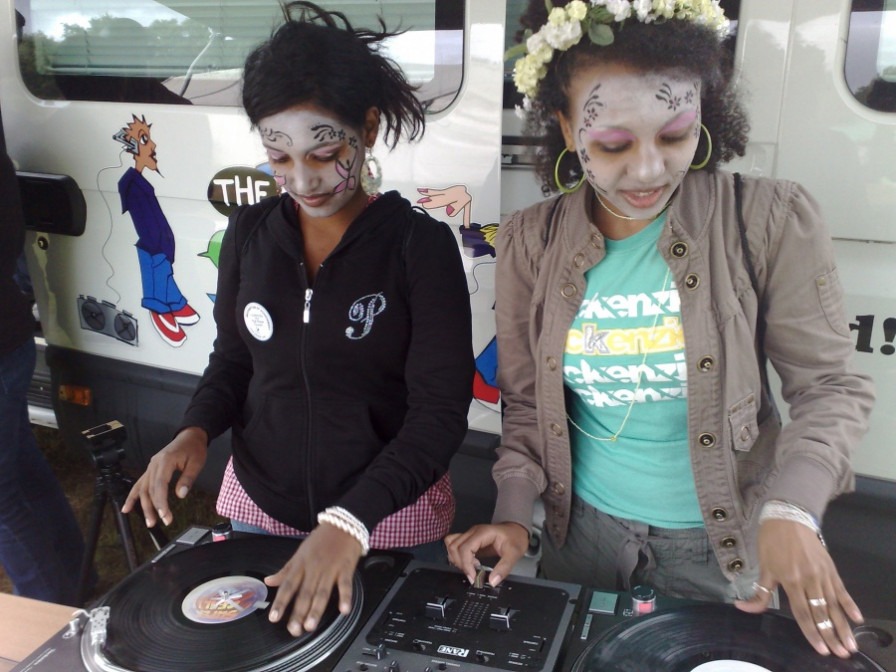Developing technology to facilitate music participation and creativity: Part One

In this three part series, Rhythmix music tutor Anna Dolphin explores the role of technology in facilitating music participation and creativity.
I am always eager to learn about technologies that can offer opportunities for creative engagement, self-expression, and social interaction. I am interested in what is being used, as well as how, and there is much to learn through sharing of knowledge, skills, practical use, and construction methods. Technological growth and availability is in continual development, and keeping up with this is on-going. In order to be a tool for creative expression, the technology itself would not be either a barrier or the point.
“Therapeutic relationships can be enhanced by incorporating technology when it facilitates interaction (Zigo, 2013), and promotes connections and feelings of ownership in the music being co-created (Martino and Bertolami, 2013).” (Magee, 2013, pp.362)
As a potential enabler, facilitator and mediator for creativity, integrated with a diverse programme of creative music, sound and arts participation and making, digital technology can offer infinite palettes of sound, which can be played, controlled, manipulated, explored and arranged in endless ways.
Many worthwhile ready-made and specialist technology options exist. Unfortunately budget constraints have an impact on how accessible some of these options may be. There is also the issue of time defined project work and access to equipment and use beyond the length of a project.
With the move to encourage people to be creators of technology not just users through makers’ movements, open source, IT initiatives, coding clubs, and cost effective components, I am interested in.
How cost effective and do it yourself approaches can have a place in real world creative facilitation?
How can developments and potential for adaptation of the technological within the makers’ movement become more accessible to technology non-specialists?
Is there need for further development of resources to support this?
How accessible is technologically facilitated music making without ongoing access to skilled technologists? -Training, set up time, confidence with using technology, and budget are all factors.
There exists a vast range of instruments and tools being designed with the potential to increase access to music and sound making and creative participation. The range of intention, ease and degrees of configurability, complexity of use, definable parameters and potential for adaptability varies enormously. Some examples offer opportunities for expression, which may be difficult to access for some individuals on more conventional or traditional instruments or music making tools. Some examples may be designed as flexible and expressive instruments, as control for acoustic instruments (Dave Meckin for example has been developing moosikMasheens, electro-mechanical musical instruments played by an ipad interface combined with software to create compositions), learning tools, fixed frameworks, or exploratory experiences for individual use, collaboration, socially focused objectives, and collective music making (for example The Cave of Sounds, an interactive sound installation which explores “collective music making through the contemporary music hacker scene.”)
Designing, building and modifying instruments is time and skill intensive. Increasingly, some makers and designers have made their designs available for low cost or free, and for others to use as well as modify. The available resources vary in complexity and detail, as well as software and physical materials needed. Some resources require previous skills and experience; others follow step-by-step instruction methods. There are also development teams working with the aim to provide low cost or open source tools to help enable people to design and make their own projects. This could allow for greater flexibility for an instrument or music making tool to be designed, adapted and configured to suit each individual. The range of input devices available, (for example motion, video tracking, computer vision, games controllers, graphics tablets, touch screens, pressure sensitive triggers, switches, joysticks, eye movement and/or blinking, breath, RFID, data from sensors such as IR, light, flex, pressure, distance, proximity, direction, humidity, light, force, flow, temperature, vibration) alongside flexible software environments offers countless possibilities for customisable, adaptable tools and instruments to create, control, explore and express with sound.
Part two, focusing on music tech and healthcare, will be released on the youth music network next week.
